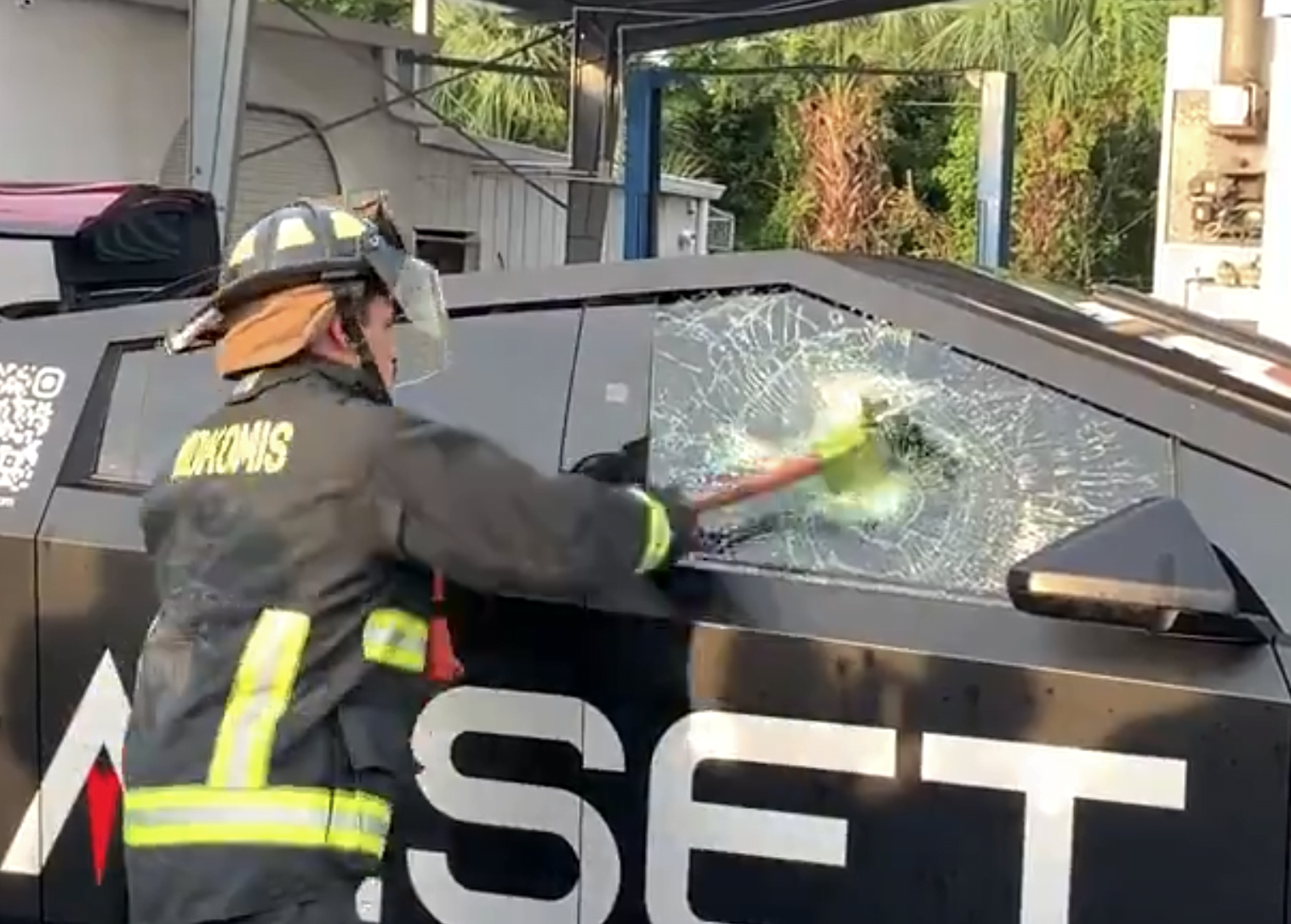The Tesla Cybertruck captured attention when it debuted at a Los Angeles event in 2019. Its unique, angular design was striking, but the real buzz came after a demonstration where the truck’s "armored glass" shattered unexpectedly when Elon Musk threw a steel ball at it. This moment quickly went viral, eclipsing other features of the truck. Nonetheless, pre-orders skyrocketed, and now, nearly five years later, another demonstration has showcased the strength of the Cybertruck’s windows.
Firefighters Put the Glass to the Test
In a recent training exercise, firefighters attempted to break the Cybertruck’s glass to assess its durability. The test revealed that it took three strikes for the first crack to appear and almost twelve strikes to completely shatter the window. This exercise highlighted the robustness of the Cybertruck’s reinforced glass—a significant aspect that Tesla emphasizes. For first responders, knowing how resilient these windows are is crucial, especially when they need to breach a vehicle’s glass in emergencies, like during accidents or rescue missions.
Safety Considerations in Emergency Situations
During the glass-breaking test, the firefighters did not use their full strength while striking the Cybertruck’s windows. Their main concern in real-life scenarios is ensuring the safety of anyone trapped inside the vehicle. When breaking glass in emergencies, responders must be cautious to prevent shards from flying inward, which could injure the occupants.
Concerns About Escape in Emergencies
However, the impressive durability of the Cybertruck’s windows does raise some questions. If the glass is excessively strong, it may hinder individuals inside from escaping during a critical situation, such as after an accident. While the security features are beneficial, there is a risk that the windows’ strength could delay rescue efforts or make it difficult for occupants to exit quickly. Future real-world tests may provide further insights into these concerns.
Owen Sparks (@OwenSparks_ on X/Twitter)


Leave a Reply